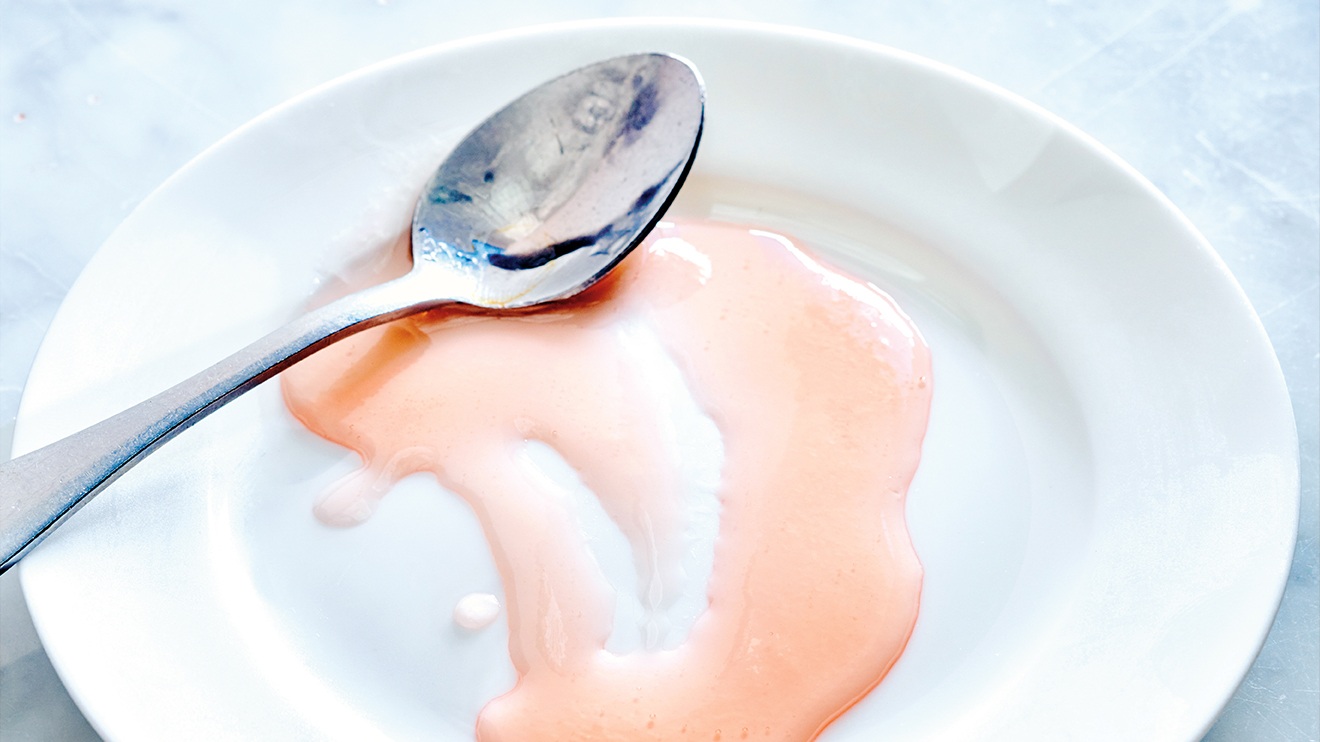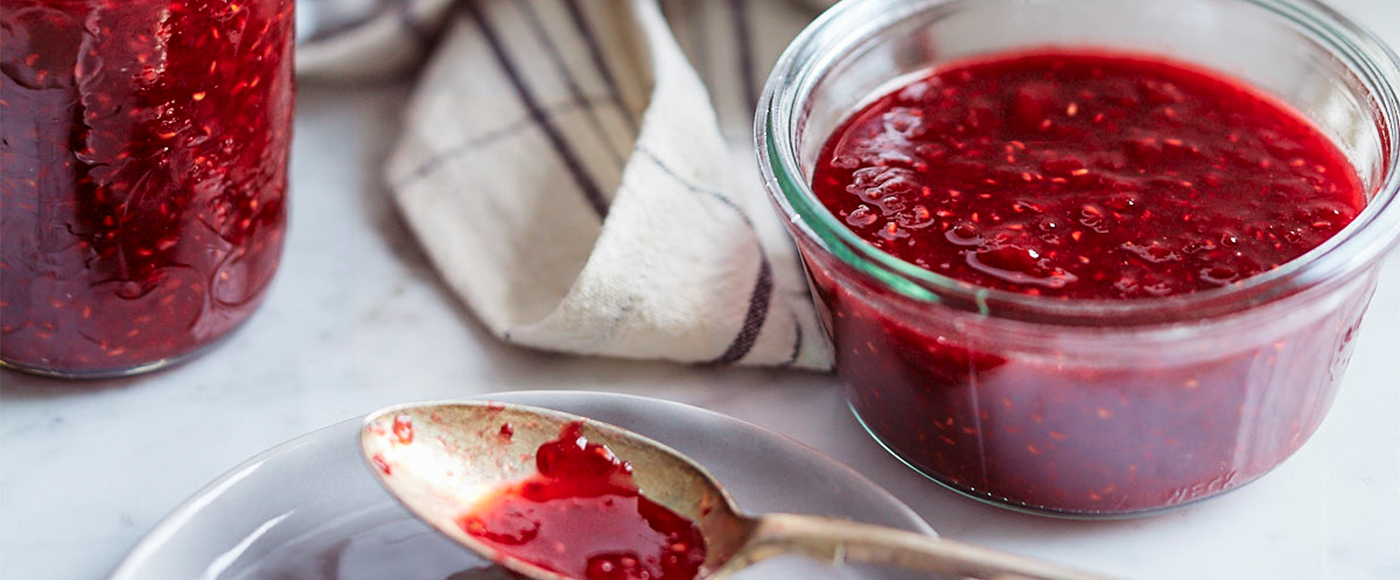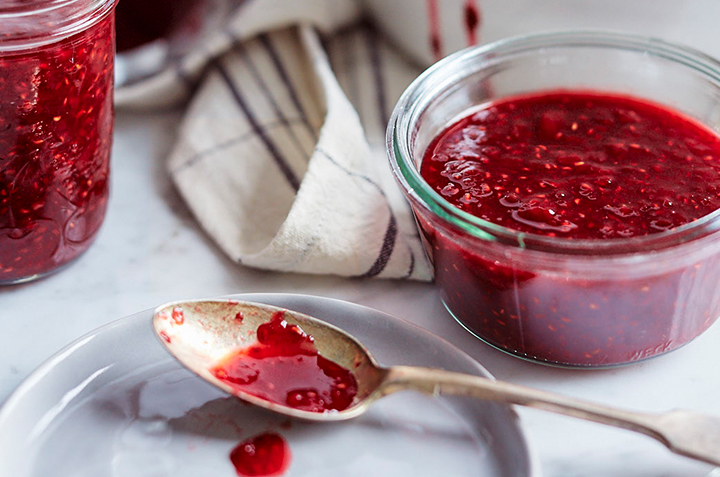The key: pectin
Thanks to pectin, jam turns into jelly. Pectin is a natural substance present in the cell walls of all fruit, but some contain a lot more than others. The table below will allow you to differentiate between them. Pectin sold in grocery stores is similar to that found in fruit but it is concentrated in a powder or liquid form. These pectins are extracted from apple pomace (a by-product of apple juice) or in the white part of citrus peel.
Fruits rich in pectin:
- Cranberries
- Black currants
- Cherries
- Quince
- Lemons
- Currants
- Kiwis
- Limes
- Oranges
- Grapefruit
- Apples
- Crab apples
- Plums
Fruits low in pectin:
- Apricots
- Pineapples
- Blueberries
- Strawberries
- Raspberries
- Nectarines
- Peaches
- Pears
- Rhubarb
Two partners: sugar and lemon juice
The pectin in fruit does not work alone. It needs sugar to do its job. Lemon juice needs to be added if a fruit is not acidic enough. The chemical transformation that takes place from the moment it is added to making a gel is quite complex. The sugar and acid act on the pectin molecules, allowing them to form a network. The proportion of ingredients plays a critical role in the result: not enough sugar and the jam will be too runny, too much acid and the jam will be too firm.
Sugar has another role to play: it protects jam against the development of bacteria, yeast and mould. Sugar allows you to keep jam in the fridge for several months after it is opened.
There are new types of pectin on the market that make perfect jam with little or no sugar but there is a catch: they keep for only three weeks in the fridge after opening. This jam must be quickly consumed.
Jam with added pectin
The first thing you need to do is choose the type of pectin that suits your needs. Do you prefer sweet jam or one with reduced sugar? Cooked or uncooked jam? Our table below will help you make the right choice. Here are three types of pectin available on the market:
- Traditional pectin (in powder or liquid form), the kind used by our grandmothers, requires a large amount of sugar to make a gel and can be used with or without cooking.
- “No-sugar” pectin acts without sugar but requires cooking.
- Pectin for jams to freeze means the jam can be made without cooking and with less sugar than traditional pectin.
If you make your jam with one of these products, closely follow the directions on the packaging. You’ll notice they list all sorts of jam and spread recipes. Jam made with commercial pectin can be prepared quickly (just one minute of boiling) and easily. Forming gel is practically guaranteed thanks to the added pectin. However, adding pectin traps aromatic molecules and can decrease the taste of the fruit. It’s one more reason to follow the quantities exactly as listed and to use ripe and tasty fruit!
No-cook freezer jams
Skip the cooking? Yes, it is possible – and easier than you think. This kind of jam preserves the delicious flavour of freshly picked fruit. Choose pectin that makes a gel without cooking and closely follow the directions on the package.
It is generally as simple as mixing the fruit with sugar and pectin, canning and letting stand. This jam will keep up to one year in the freezer and up to three weeks in the fridge. This no-cook jam cannot be stored at room temperature and keeps for a shorter amount of time in the fridge after opening, because it was not cooked or treated with boiling water to kill micro-organisms.
1. Traditional pectin, liquid...
- Needs sugar? Yes.
- Needs cooking? Use with or without cooking.
2. Traditional pectin, powder...
- Needs sugar? Yes.
- Needs cooking? Use with or without cooking.
3. No sugar pectin...
- Needs sugar? Optional: use without sugar, a reduced amount of sugar or with artificial sweetener.
- Needs cooking? Yes.
4. No-cook freezer jams...
- Needs sugar? Yes, but a lot less than traditional pectin.
- Needs cooking? No.
Jam without adding pectin
Jams made without adding pectin requires a bit more effort and care. However, many prefer the more natural texture and the lightly caramelized taste. This type of jam is called long-boil jam because it needs a long cooking time to concentrate the fruit’s natural pectin, and to add sugar and acid to make a gel. Here are three tips to help you get the right concentration of pectin.
- Use a mixture of about 75% ripe and 25% almost ripe fruit, since the amount of pectin able to gel decreases when fruit is too ripe.
- Recipes sometimes call for cooking fruit with a little water before adding sugar. Do not skip this step: it allows cells to soften and release a greater amount of pectin. Heat slowly to fully extract the pectin.
- Resist the temptation to reduce the sometimes astronomical amount of sugar called for in the recipe: if you do, your jam may not form a gel. Cooking the fruit-sugar-acid mix can reduce the juice and increase the concentration of sugar and pectin, the secret to a good consistency. Cooking time varies according to the fruit, but takes on average around 15 minutes. Keep a close eye on things because jam tends to stick to the bottom of the pot during this stage.
There is a whole family of pectin in the cells of fruit. Pectin is modified by enzymes as the fruit ripens. Really ripe fruit contains almost none of the pectin that will form a gel. This is why the best jam is made with fresh fruit!
Use one of these methods to check if the jams is ready:
COLD-PLATE METHOD
Place two or three small plates in the freezer before you start cooking. Pour a spoonful of jam on one of the cold plates and put it into the freezer for about two minutes. If the jam is thick and flows slowly down an inclined plate, the jam is ready.

THERMOMETER METHOD
First, test the thermometer’s accuracy by placing the bulb in boiling water for two minutes. Note the temperature. When the temperature of the jam is 3 to 5 °C (6 to 10 °F) higher than the temperature you noted, it has reached a sufficient concentration of sugar and pectin.
SPOON METHOD (FOR JELLIES ONLY)
Place several metal spoons in the freezer. Dip a cold spoon into jelly and hold it horizontally. At the beginning of cooking, jelly will fall off the spoon in drops. When the jelly is ready, it will fall off the spoon in “sheets” from almost the entire width of the spoon.
JAM TIPS
In a jam recipe, a quarter of the sugar can be replaced by honey without affecting the consistency. Avoid using brown sugar or molasses which have more of a pronounced flavour.
The sterilization (heat treatment) process
- This is the last crucial step for jam that will be stored at room temperature. Heat treatment destroys micro-organisms that enter jars during the filling process and creates an airtight seal that prevents contamination during storage.
- Place your jars and metal rings in a large pot and cover with water. Bring to a boil, reduce heat and simmer until the jam is ready.
- Put the flat lids in a small pot and cover with very hot but not boiling water to soften the rubber ring that seals the jars.
- Fill the jars with jam, leaving 0.5 cm (1/4 inch) of headspace. Wipe the rims with a clean towel and place a flat lid on each jar.
- Tighten the metal ring on each jar just until the point of resistance.
- Put the jars into the pot of boiling water. Bring the water to a boil and calculate 10 minutes for jams and jellies. Remove the jars holding them upright and let cool, undisturbed for 24 hours.
- Label your treasures and store them in a cool, dark place. They will keep for up to a year.


